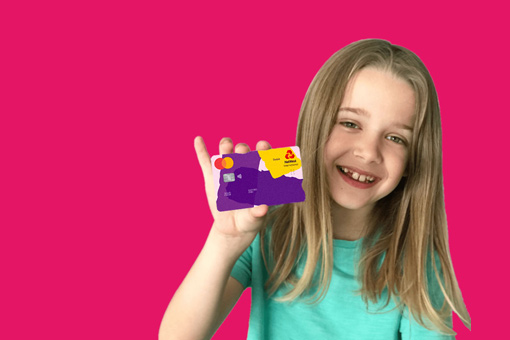On this page
Current accounts
This account is used to manage money coming in and going out.
This type of account comes with a debit card which you can use to withdraw cash or pay using ‘chip and PIN’.
If you’re over 18, you may be able to apply for an overdraft, which allows you to use more money than you have in our account.The bank sets the amount, and you may be charged.
Pay your bills and standing orders using direct debit.
When you earn a wage/salary, it will be paid directly into this account.
Savings accounts
A savings account is a safe place to put your money if you’re saving up for something for the future.
When you’re over 16, you’ll pay tax on interest you earn from the account.
This type of account usually provides better interest rates than current accounts.
If you’re under 16 or a pensioner, you won’t pay tax.
The more you save into this account, the more you’ll earn from interest as a result.
Cards
Purpose |
Payment cards are used to make instant payments electronically, without the need to use cash. There are two main types: debit cards and credit cards. |
Where |
Online and in most shops. Debit cards can be used to withdraw cash at an ATM also. |
Who |
Debit cards are issued to anyone holding a current account. Current accounts are available to adults and to children however some features of the account may not be available to under 18s. |
Features |
Debit cards access the available money in your current account. Credit cards work differently. You can use a credit card to spend money up to a 'credit limit' which you then repay at a later date. You may be charged interest depending on how long it takes you to pay back what you have spent. |
Apple Pay / Google Pay (Digital Wallets):
Purpose |
To pay for goods and services using your phone instead of cash or cards. |
Where |
You can pay online, in shops and for services that accept contactless payment |
Who |
You need to be at least 13 years old for Apple Pay and 16 years old for Google Pay.™ Most digital wallets need parental consent for people under 18 years old. |
Features |
|
Cash
Purpose |
To pay almost anywhere, apart from online. |
Where |
Paying for goods and services in shops. |
Who |
Anyone can use cash. |
Features |
|
Online Banking
Purpose |
Used to pay money directly into your personal account or to pay companies directly, for things such as bills. You can also use this to check your account and its details. |
Where |
You can use this anywhere with your smartphone, computer, or tablet, as long as you have a stable internet connection. |
Who |
You must be at least 16 years old to bank online. |
Features |
|

All about fraud and scams
Unfortunately, wherever there’s money there will also be fraud and scams. Thankfully, many of these frauds and scams are well known and there are signs you can look out for to prevent yourself from being caught out.
What is fraud?
Fraud is when people are tricked out of their money. For example, fraudsters or hackers commit fraud when they steal personal information and bank details (known as identity theft).
Phishing and smishing
Phishing comes in the form of an email and smishing, a text. They encourage you to reveal personal details or send money, by sending an ‘urgent’ email or text which will take you to their website. This is where fraudsters or scammers will try to obtain your personal details and may even try to get you to pay for something. The site might look real, but it is really a fake site set up by criminals to either steal your details or your money.
Ways you can prevent this:
- Banks will never ask you to confirm ALL the letters or numbers of your bank card, PIN or password. Never provide your full personal details online.
- Do your research. Learn how to recognise fake messages and websites from real ones.
- Never pay for anything online that isn’t from a secure website address.
Pharming
Pharming is a piece of computer code that sends internet users to a fake website. You’ll be on a genuine website but the code on your computer will allow fraudsters to direct you to a fake website without your knowledge, to capture personal details such as bank card numbers. This type of code often gets onto computers when a person clicks on a link in spam email.
Ways you can prevent this:
- When buying online, always check that you’re on a secure payment website by looking at the web address in the bar at the top. You should see a padlock and ‘https’ rather than ‘http’. If in doubt, do not proceed with any transaction.
- Make sure to do your research and find the best available antivirus software to have on your devices connected to the internet.
- Never click on a link in an email from a source you don’t recognise.
Prize draws and lottery scams
These scams will come in the form of a letter or an email offering you a large prize, saying you have been selected or have won. Within the letter or email they’ll ask you to send a small amount of money, or to provide your bank details or prove your identity to claim your ‘prize’. The fraudsters then steal your money or your identity. You might be told to ring a number to claim your prize, and this will be a premium number that costs a lot of money, which then goes to fraudsters.
Ways you can prevent this:
- Receiving an email or a letter containing a prize that seems ‘too good to be true’, then it most likely is. If you’re ever unsure, speak to a member of your family or a friend for advice or do your research.
- When doing your research on a potential scam, you may find other people that have reported the scam already.
- Never send money, give your personal details, or call a number if you don’t recognise the sender or where it’s coming from.
Tips on staying safe online
Never give out your personal or bank account information.
Keep your bank card and PIN number secure. Don’t write your PIN number anywhere.
Keep your personal information private i.e., shred important letters and documents.
Always keep your receipts.
Be wary if you are contacted unexpectedly by a company or person that you haven’t heard of before.
Be suspicious if you’re pressured into making an immediate decision.
Be suspicious if a ‘company’ lacks clear contact details e.g., only includes a mobile number or a PO box address.
Keep in mind: if it sounds too good to be true, it probably is – there’s no such thing as free, quick, or easy money.
When selling online, never send goods until you receive full payment.
Don’t share personal information on social media.

